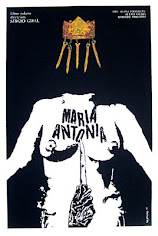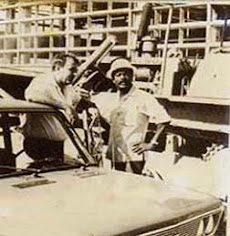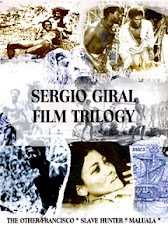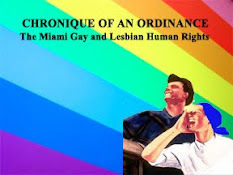Anachronism and its discontent – Miguel Coyula’s Memorias del desarollo (Memories of Overdevelopment) (Frontier) Wed, July 21, 2010 1:22:23 PM
Critica de Berenice Reynaud en Senses of Cinema a Memorias del Desarrollo

In the difficult relationships between Cuba and the United States, a film and a man have played a sarcastic, unexpected role. Completed in 1968, Tomas Guttierez Alea’s Memorias del subdesarrollo (Memories of Underdevelopment) was banned in the US for five years due to its embargo against Cuba, but, once shown, received an award from the National Society of Film Critics. Meanwhile, it had reached Europe and the rest of the world in the crucial 1968-69 period, with its student unrest, massive strikes and burning questions about revolution and the strategic alliance between Third World liberation movements and left-wing groups in developed countries. It became a classic of “Third Cinema” for its incisive portrayal of the disillusionment of a class of intellectuals, who had enthusiastically embraced the Cuban revolution, but found themselves like a fish out of water in the new society. Some of the issues inherent in the Castro regime – censorship, persecution of homosexuals and dissidents – had not surfaced yet, but the protagonist, Sergio, is prey to a form of melancholia that is both specific and universal: a visceral Latin South American attachment to the land, its history, the tender moment of a long-gone dawn, the façade of a family house haunted by domestic ghosts, is combined with the sobering realisation that change (any change) will, in the long term, make you obsolete. Memories was acutely political by presenting Sergio’s dilemma as overshadowed by the mechanism of imperialism: the economic and political exploitation of the third world creating an “underdeveloped”, colonised mind.
One of the first international successes of New Cuban Cinema, Memories displayed a sensual, imaginative approach to cinematic language, coining an arresting dialectics between the subjective and the objective, Sergio’s stream-of-consciousness, his point of view and the material conditions of which the Cuban population was living/surviving at the time (represented through a montage of documentary footage). Memories, however, was not autobiographic, at least not for Guttierez Alea (1928-1996). (11) Himself a member of an affluent, yet progressive family, he made his first films in the 1950s, influenced by Italian neo-realism, and after the Cuban revolution founded the ICAIC (Instituto Cubano del Arte y la Industria Cinematográphicos) in 1959 with several of his young colleagues in the film industry. He went on to direct some of the most important films in the history of his country – Muerte de un burócrata (Death of a Bureaucrat, 1966), La última cena (The Last Supper, 1976), Up to a Certain Point (Hasta cierto punto, 1983) – combining his filmmaking activities with his work at the ICAIC. Unlike Sergio, he overcame whatever melancholia he may have experienced, and successfully inserted himself in the apparatus of the new society – even though he managed to present a complex, sometimes critical picture of it. His penultimate and 23rd film, Fresa y Chocolate (Strawberry and Chocolate, 1993 – co-directed with Juan Carlos Tabío) tackles the situation of homosexuals in socialist Cuba. (12)
The man who had not managed this transition, and whose ruminations were brought to the screen, was the author of the original 1965 novel, Edmundo Desnoes (born La Havana, 1930), (13) who, after a few years in New York as the editor of a Spanish-language magazine, eagerly returned to Cuba after 1959. A celebrated writer, Desnoes, however, grew increasingly alienated from Castro’s regime and, in 1979, defected to settle in the US. After remaining almost 20 years without publishing a new book, he came up with the sequel to his most famous novel, and wrote Memorias del Desarrollo (Memories of Overdevelopment, 2007) about another form of disillusionment – his estrangement from his country of exile. The new Sergio casts a sardonic look at American foibles, while reflecting on the still-persistent power of the images from the Cuban revolution, which he collects and creatively collages with photos of supermodels and advertisements (Desnoes himself has composed hundreds of such collages in the last decades). Already at the core of the first novel, sexual politics return with a vengeance. For the two versions of Sergio, the unease of their relationships to women, the Lacaniansexual impasse is a vector of their alienation from society. They both have an ex-wife and a young girlfriend – who seeks something else they are unable to provide. It all ends up badly: wives bitch and sue; the May-September affair results in a trial for statutory rape in Cuba, and in losing an academic job in the US.
For the young Cuban-American filmmaker Miguel Coyula, the publication of Desnoes’ follow-up novel was a dream come true – opening the possibility of directing a companion piece to Guttierez Alea’s masterpiece, while channelling his own feelings about the Cuban diaspora. Born and educated in Cuba, Coyula went to the US in 1999 after being invited to show some of his short films, and being offered an acting scholarship at the Lee Strasberg Institute. He then directed his first digital feature, Red Cockroaches (2003), which became an underground cult movie, and was noted for his imaginative use of inexpensive digital technology. He then teamed with New York independent producer David W. Leitner and worked for about five years to complete Memorias.
While Alea’s film had been hailed for its “modernist” aesthetics”, (14) Coyula uses postmodern techniques to suggest another form of displacement: generational gap. In 1968, both Sergio and the Cuban revolution were young. In 2010, Fidel Castro may be dying, out of sight, in a hospital; his brother Raul is in charge; the voices of the dissidents are heard more loudly; the community of Cubans in exile in the US has become known for its right-wing boisterousness; Desnoes is an 80 year-old cantankerous man; and Coyula, the vector of a new hybrid identity, is 33; in-between, he cast Cuban American actor Ron Blair (with whom he had worked in his previous films) who embodies, with a combination of restraint and irony, a middle-aged version of the fictional Sergio. Past and present collide. In his novel Desnoes had introduced the character of Pablo, the protagonist’s gay brother, a brilliant filmmaker whose work was banned by the Cuban regime, and who pursued an award-winning career in Europe. Pablo is clearly patterned after Néstor Almendros (1930-1992), the Spanish-born filmmaker who moved to Cuba at 18, and then, after Gente en la Playa (1960), moved to Paris where he became one the most sought-after cinematographers in the world. At the end of his life, Almendros returned to directing, with two films that violently criticised the repression of homosexuals (Mauvaise conduite, 1984) and human rights violation in Cuba (Nadie escuchaba/Nobody Listened, 1987). The allusion to Pablo/Néstor is more than a reminder of “what went wrong” in the revolution; it is the core of a nasty feeling of guilt that gnaws Sergio: he did not support his brother in his fight against censorship, he didn’t keep in touch with him before his AIDS-related death. (15) Later, we also learn that there was a daughter, left behind in Cuba. Sergio grows increasingly remote and sarcastic, carrying the weight of the “mistakes of two lifetimes” – one spent in Cuba, the other in the US. “I am a loser, I am lost. Only now, after my cruelty with women, my disastrous embrace of socialism, of having written and said an incredible amount of bullshit, now I understand the humiliating pleasures of loserdom”, he mutters to himself.
Wherever he is, the world he knew is no longer the world he lives in. He keeps a diary and, with a paper cutter and some glue, creates photomontages. Coyula documents this old-fashioned process – to a point; we see the blade cutting through the eye or the breast of the magazine picture of a naked woman; at other moments, Sergio’s collages are wildly re-created through over-saturated digital effects. While Guttierez Alea’s film rested on an elegant use of montage, Coyula ups the ante by over-compositing the image and saturating the colours, creating a complex kaleidoscope, which in turns dictates the editing of the sequences in a kinetic, non-linear way. Paralleling free association, the structure blurs the lines between actual events, fake memories, projections, irritation at American pop culture, political anger, rambling and resentments. After the first moments of annoyance at this systematic over-use of the possibilities of the digital medium, a certain logic appears. These techniques allow Coyula to further destabilise his character, to create a palpable tension between the film and Desnoes’ text, and to eventually reappropriate (or salvage) his trajectory in exile. Desnoes/Sergio and his collages become the multi-coloured prism through which Coyula can look at his own fractured history. He belongs to a generation who found it possible to work in the margins of the Cuban industry through their use of light, portable digital technology. (Coyula’s films are shown both in and outside Cuba).
And so these bilingual Cuban “memories” end up in America where both Desnoes and Coyula live, in a space where the dream of the “last frontier” remains – the Utah desert (which is, coincidentally, the state in which Sundance takes place). Leaving New York, its bullshit, its neon signs, its women, its post 9/11 paranoia, Sergio settles in a remote cabin, snatches, almost by distraction, a quickie with a Mormon missionary and then drives away. In the middle of nowhere, his car breaks down. At the end of a road, he finds a man in an astronaut suit (independent Utah filmmaker Trent Harris, of Plan 9 from Outer Space [1995] and The Beaver Trilogy [2000] fame) minding the replica of a “Mars space station”. This is not a dream, but another symptom of American idiosyncrasies (a mixture of survivalist ideology and do-it-yourself popular science). Anyhow, History stops here…























.jpg)

















